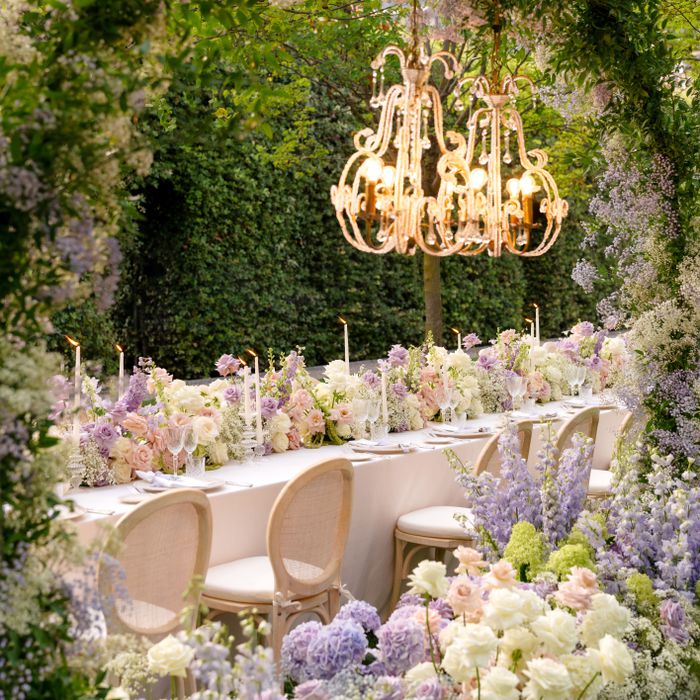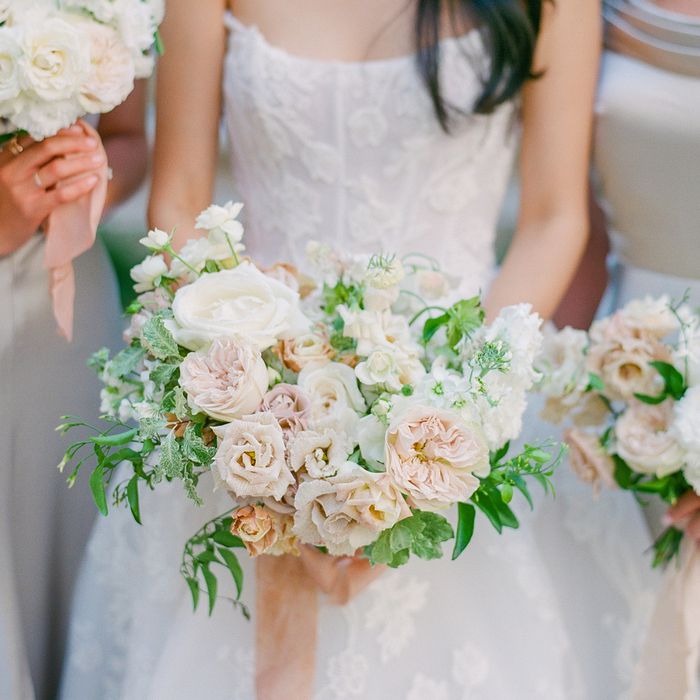I. Introduction

A. The significance of flowers in wedding ceremonies
Flowers have always been an integral part of wedding ceremonies. They serve as a way to bring natural beauty and a touch of elegance to the event. They are also a symbol of love, fertility, and new beginnings, making them a perfect fit for the celebration of marriage.
B. Exploring the etiquette of who receives flowers at a wedding
The tradition of giving flowers at a wedding is steeped in etiquette. While the bride and groom are the focal points of the ceremony, there are also several key individuals who traditionally receive flowers as a symbol of honor and appreciation.
II. The Bride and Bridal Party
A. Bridal bouquet and its importance
The bridal bouquet is perhaps the most important floral arrangement at a wedding. It is a focal point of the bride’s attire and is meant to complement her gown while also reflecting her personal style. The choice of flowers, colors, and design of the bouquet can make a significant impact on the overall aesthetic of the wedding.
B. Bridesmaids’ bouquets and boutonnieres for groomsmen
The bridesmaids’ bouquets and groomsmen’s boutonnieres are also important floral arrangements. The bridesmaids’ bouquets should complement the bridal bouquet and add a touch of color and elegance to the bridal party’s ensembles. Similarly, the groomsmen’s boutonnieres should complement the overall look of the wedding and reflect the groom’s personal style.
C. Corsages for mothers and grandmothers
In addition to the bridal party, it is customary to present corsages to the mothers and grandmothers of the bride and groom. These floral arrangements are a symbol of honor and appreciation for the important role that these women play in the lives of the couple.
D. Flower girl and ring bearer arrangements
The flower girl and ring bearer also play a special role in the wedding ceremony, and as such, they are often presented with floral arrangements to complement their participation. These arrangements should reflect the youthful and innocent nature of the children while also adding a touch of charm to the ceremony.
III. The Groom and Groomsmen
A. Boutonnieres for the groom
The boutonniere worn by the groom is a small yet significant detail in his ensemble. Typically, it is a single flower or a small cluster of flowers that is on the left lapel of the groom’s jacket. The choice of flower for the groom’s boutonniere should complement the overall color scheme and style of the wedding.
B. Groomsmen’s boutonnieres
Similar to the groom, the groomsmen also wear boutonnieres on their jackets. These boutonnieres should coordinate with the overall floral theme of the wedding and typically complement the bridesmaids’ bouquets. While they may not be as prominent as the groom’s boutonniere, they play an important role in adding a touch of elegance to the attire of the groomsmen.
C. When to wear and remove boutonnieres
Boutonnieres are typically worn throughout the wedding ceremony, reception, and any formal photographs thereafter. However, some individuals may choose to keep their boutonnieres as a keepsake from the special day.
IV. Family Members
When it comes to weddings, it’s not just the bride and groom who are important – family members play a crucial role in the celebration as well. From the mothers and grandmothers to the fathers and grandfathers, each family member deserves to feel special and included in the festivities.
A. Corsages for mothers and grandmothers
Mothers and grandmothers are often seen as the matriarchs of the family, and it’s important to honor them on such a momentous occasion as a wedding. One way to do so is by presenting them with a beautiful corsage to wear on the day of the wedding.
Corsages are a traditional way to show appreciation and love for the mothers and grandmothers of the bride and groom. These can match the color scheme of the wedding or to include their favorite flowers. Not only does this serve as a tangible token of gratitude, but it also adds a special touch to their attire for the day.
B. Boutonnieres for fathers and grandfathers

Just as corsages are a way to honor the women in the family, boutonnieres serve as a gesture of appreciation for the men. Fathers and grandfathers play unique and important roles in the lives of the bride and groom, and it’s essential to acknowledge their significance on the wedding day.
Boutonnieres are typically worn on the lapel of a suit or tuxedo, and they can complement the overall theme of the wedding. Whether it’s a simple floral design or a more elaborate arrangement, a boutonniere is a thoughtful way to recognize the fathers and grandfathers as cherished members of the wedding party.
C. Special considerations for blended families
In today’s society, blended families are increasingly common, and it’s important to consider their dynamics and unique relationships when planning a wedding. When it comes to corsages and boutonnieres, it’s crucial to include and honor all of the important family members, regardless of their biological or step relationships.
For blended families, this might mean providing corsages and boutonnieres for multiple mothers, fathers, and grandparents. It’s essential to recognize and respect the roles that each individual plays in the lives of the bride and groom, and to ensure that everyone feels included and valued on the wedding day.
In addition to corsages and boutonnieres, blended families may also choose to incorporate other symbolic gestures to honor their unique family dynamics. This could include special readings or speeches during the ceremony, as well as incorporating blended family symbolism into the decor or ceremony itself.
V. Special Guests and VIPs
A. Corsages for special female guests
In addition to the bridal party and immediate family members, special female guests such as close friends, godmothers, or other important women in the couple’s lives may be presented with corsages. These elegant floral arrangements serve as a token of appreciation and recognition for their significance in the lives of the couple. The design and choice of flowers for these corsages should reflect the overall wedding theme and complement the attire of the recipients.
B. Boutonnieres for special male guests
Similarly, special male guests who hold a significant role in the couple’s lives may be honored with boutonnieres. This may include close friends, godfathers, or individuals who have played a key role in the lives of the bride and groom.
C. Honoring key individuals with floral arrangements
When considering floral arrangements for special guests and VIPs, it’s important to consider the meaningful relationships these individuals have with the couple. Whether it’s lifelong friends, mentors, or influential figures, the selection and presentation of corsages and boutonnieres serve as a heartfelt gesture of respect and appreciation for their presence on the couple’s special day.
In conclusion, flowers play a vital role in the overall aesthetic and symbolism of a wedding ceremony. From the bridal bouquet to the floral arrangements for the bridal party and honored family members, each floral arrangement serves as a meaningful and beautiful addition to the celebration of love and commitment. By understanding the significance of each floral arrangement and adhering to traditional etiquette, couples can ensure that their wedding is adorned with the beauty and elegance that only flowers can provide.

